Lesser-Known Sheep Breeds From Around the World”And What They’re Good For
Some breeds are prized for meat, others for their milk. And yet even others for the type of wool they provide. Here’s a rundown.
Lesser-Known Sheep Breeds From Around the World”And What They’re Good For
Some breeds are prized for meat, others for their milk. And yet even others for the type of wool they provide. Here’s a rundown.

Nadji
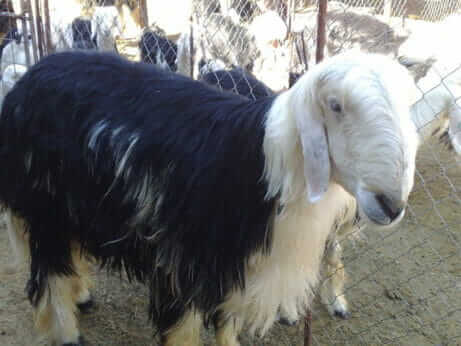
The Nadji hails from Saudi Arabia and is a multi-purpose breed used for meat, milk, and wool. These animals are tall, hardy, and have long silky hair and drooping ears. They’re typically black, with white faces and legs.
Castlemilk Moorit
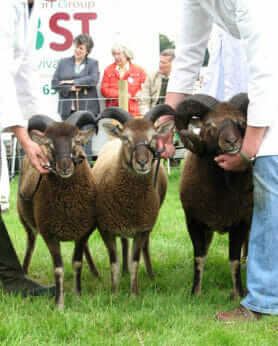
This Scottish breed was developed by Sir Jock Buchanan-Jardine in the early 20th century from several native breeds. On the shorter side, these animals produce a fine brown wool and are also prized for their meat. The ewes produce lively lambs late into life and are protective mothers.
Manx Loaghtan
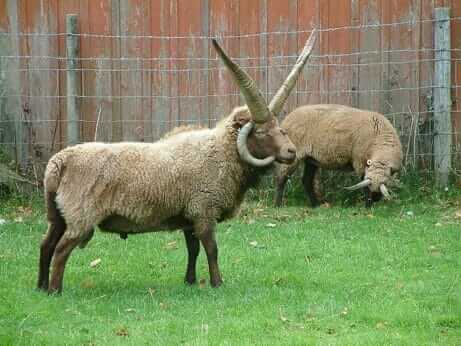
The Manx Loaghtan is an ancient breed originating from prehistoric sheep from northwest Europe. Recognizable by its distinctive four horns (sometimes six), this breed grazed the Isle of Man for centuries before nearly disappearing for good if not for a handful of dedicated enthusiasts who brought them back from the brink. These are great meat and wool animals with a rich brown fleece.
Jacob
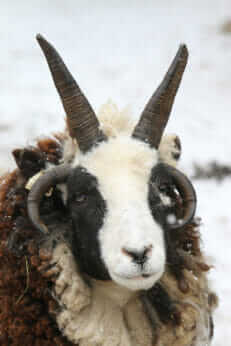
Another four-horned breed, the Jacob sheep is a black and white spotted creature with a medium-fine fleece from England (although there’s speculation they originated in what is today Syria). Unlike other ancient breeds, the Jacob doesn’t have a thick, coarse outer coat, so their wool is great for handspinning into yarn. They’re also produce a lean, flavorful meat and are a great option for breeding stock.
Racka
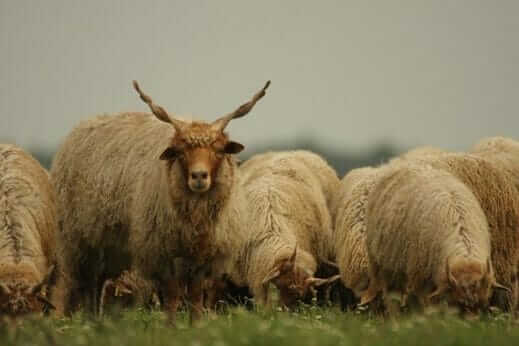
The Racka‘s most distinctive feature is its long, spiral horns, but this native of Hungary has much more to offer. They’re raised for meat, milk, and wool. Hardy yet gentle, the Racka is often crossbred because of their ability to pass these traits onto their offspring. Their wool is generally soft and crimped, which is also useful for hand-spinning.
Awassi
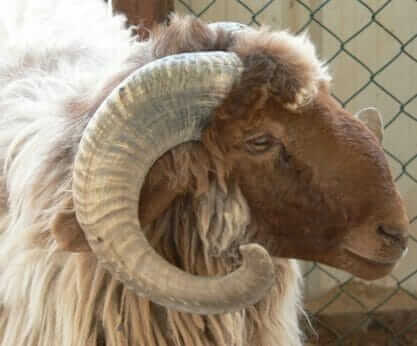
A Middle Eastern breed, the Awassi is a champion milker, able to produce up to eight times the amount of most commercial breeds in the U.S. It has a brown face and legs and a long willowy white or brown fleece often used for making rugs. They’re gentle around people and are great foragers making them great for a grazing-production setup.
Florida Cracker

One of the oldest breeds in the United States, these sheep with a funny name developed from the original sheep brought by Spanish explorers in the 1500s. It’s named for the first non-native settlers in Florida – Florida Crackers – who raised these animals. While small, these sheep are hardy, heat tolerant, able to subsist on poor forage, and show resistance to the kinds of internal parasites that plague other sheep breeds. They’re good for milking, meat and wool.
North Ronaldsay

A native of the Orkney Islands off the coast of Scotland, these small slender sheep spend most of their time living on the windswept beaches eating seaweed. They’re celebrated for their and are also good wool producers.
Navajo Churro
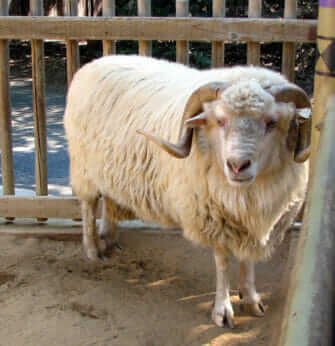
The Navajo Churro was America’s first domestic sheep breed brought to the U.S. by Spanish explorers in the 1500s. This small, rugged breed was nearly wiped out by the U.S. government in its effort to subjugate the Navajo people who relied on the animals. The breed is raised for both meat and wool. The thick fleece comes in several colors, including white, silver, blue, brown, red, and black and is most often used for weaving rugs.
Herdwick
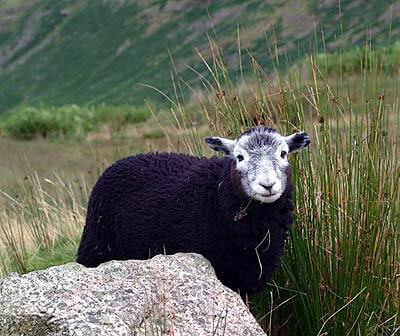
Hailing from England’s Lake District, this very old and hardy breed has been inhabiting some of England’s highest mountains since the 12th century. The lambs are born with a black coat that gives way to white at the head, and it will eventually become gray after its first shearing. They’re a good meat breed and although their wool is coarser than that of many commercial breeds, it’s known for its durability.
SaveSave
SaveSave
Follow us
This work is licensed under a Creative Commons Attribution-NoDerivatives 4.0 International License.
Want to republish a Modern Farmer story?
We are happy for Modern Farmer stories to be shared, and encourage you to republish our articles for your audience. When doing so, we ask that you follow these guidelines:
Please credit us and our writers
For the author byline, please use “Author Name, Modern Farmer.” At the top of our stories, if on the web, please include this text and link: “This story was originally published by Modern Farmer.”
Please make sure to include a link back to either our home page or the article URL.
At the bottom of the story, please include the following text:
“Modern Farmer is a nonprofit initiative dedicated to raising awareness and catalyzing action at the intersection of food, agriculture, and society. Read more at <link>Modern Farmer</link>.”
Use our widget
We’d like to be able to track our stories, so we ask that if you republish our content, you do so using our widget (located on the left hand side of the article). The HTML code has a built-in tracker that tells us the data and domain where the story was published, as well as view counts.
Check the image requirements
It’s your responsibility to confirm you're licensed to republish images in our articles. Some images, such as those from commercial providers, don't allow their images to be republished without permission or payment. Copyright terms are generally listed in the image caption and attribution. You are welcome to omit our images or substitute with your own. Charts and interactive graphics follow the same rules.
Don’t change too much. Or, ask us first.
Articles must be republished in their entirety. It’s okay to change references to time (“today” to “yesterday”) or location (“Iowa City, IA” to “here”). But please keep everything else the same.
If you feel strongly that a more material edit needs to be made, get in touch with us at [email protected]. We’re happy to discuss it with the original author, but we must have prior approval for changes before publication.
Special cases
Extracts. You may run the first few lines or paragraphs of the article and then say: “Read the full article at Modern Farmer” with a link back to the original article.
Quotes. You may quote authors provided you include a link back to the article URL.
Translations. These require writer approval. To inquire about translation of a Modern Farmer article, contact us at [email protected]
Signed consent / copyright release forms. These are not required, provided you are following these guidelines.
Print. Articles can be republished in print under these same rules, with the exception that you do not need to include the links.
Tag us
When sharing the story on social media, please tag us using the following: - Twitter (@ModFarm) - Facebook (@ModernFarmerMedia) - Instagram (@modfarm)
Use our content respectfully
Modern Farmer is a nonprofit and as such we share our content for free and in good faith in order to reach new audiences. Respectfully,
No selling ads against our stories. It’s okay to put our stories on pages with ads.
Don’t republish our material wholesale, or automatically; you need to select stories to be republished individually.
You have no rights to sell, license, syndicate, or otherwise represent yourself as the authorized owner of our material to any third parties. This means that you cannot actively publish or submit our work for syndication to third party platforms or apps like Apple News or Google News. We understand that publishers cannot fully control when certain third parties automatically summarize or crawl content from publishers’ own sites.
Keep in touch
We want to hear from you if you love Modern Farmer content, have a collaboration idea, or anything else to share. As a nonprofit outlet, we work in service of our community and are always open to comments, feedback, and ideas. Contact us at [email protected].by Andrew Amelinckx, Modern Farmer
December 22, 2017
Modern Farmer Weekly
Solutions Hub
Innovations, ideas and inspiration. Actionable solutions for a resilient food system.
ExploreExplore other topics
Share With Us
We want to hear from Modern Farmer readers who have thoughtful commentary, actionable solutions, or helpful ideas to share.
SubmitNecessary cookies are absolutely essential for the website to function properly. This category only includes cookies that ensures basic functionalities and security features of the website. These cookies do not store any personal information.
Any cookies that may not be particularly necessary for the website to function and are used specifically to collect user personal data via analytics, ads, other embedded contents are termed as non-necessary cookies.
I love this website because I personally am a sheep farmer and I need to learn as much as I can about sheep
Does anyone have information about geeps? Our male goat jumped the fence and went into our dorper ewes pen. Now we have two baby geeps. One male, one female. They are healthy. The male geep is approximately 2 months old with horns approximately 4 in long already. The baby female geep is colored like a Dorper Sheep, but the face is shaped as a goat. Appreciate any input. Thank you
Where may I find some of these sheep to purchase?
I’m interested in gathering several old types of sheep for my hand spinners’ flock. Where can I find places to purchase several different breeds .
What might a Barredge sheep be? Reference found in an English will of 1582.
How beautiful are these